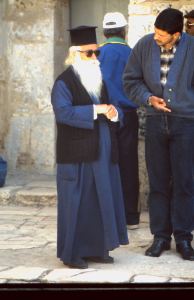Occasionally I am asked questions about what the Bible teaches. Here is one from my inbox.
“I would like to put up a Christmas tree, but my boss says it’s not a Christian symbol. In fact, he says the Bible teaches against it. I think he’s just cheap.” – R. Cratchit.
Bob, you’re really asking two questions. The first one asks, “Is it wrong to celebrate Christmas?” Let’s deal with that question before we look at your second question, “Are Christmas trees sinful?”
First, there are no commands or examples of Christians celebrating the birth of Jesus in the New Testament. The Christmas holiday probably didn’t exist. On the other hand, we can reason, Jesus had a birthday and the story of his birth is an amazing part of the Bible. (See the first three chapters of Matthew and Luke for more details.) Why not set aside a day to re-tell the story and celebrate this incredible event?
Historically, Christmas was an early Christian attempt to re-frame a popular pagan holiday (the winter solstice) in Christian clothes. This practice of taking something from the culture and giving it a new meaning is called “co-opting.” It’s very common. For example, the popular hymn, “He’s the Lilly of the Valley” was actually taken from Jack Thorpe’s 1908 song, “Little Joe the Wrangler” (from the first published collection of cowboy songs). We just changed the lyrics. This has been a common practice for millennia and if it is acceptable to co-opt music, why isn’t acceptable to do the same thing with a holiday too?
Second, it is also important to note the distinction between a “holy day” and a “holiday.” Holy days serve an efficacious purpose: if you observe it properly, you will receive a blessing. Yom Kippur and the other Jewish holy days are examples of just that.
As far as I can see, we have no commands or clear examples of the early Christians observing holy days, although the Apostle Paul told the Romans: “One person esteems one day as better than another, while another esteems all days alike. Each one should be fully convinced in his own mind. The one who observes the day, observes it in honor of the Lord,” (Romans 14:5, 6). The closest thing we have in Christianity to a holy day would be Sunday – the Lord’s Day, which is celebrated in worship every week.
Third, Bob, perhaps your boss is thinking about Ezekiel’s condemnation of the Israelites: “they put the branch to their nose,” to object to Christmas trees (Ezekiel 8:17). In Ezekiel’s day, people falsely worshiped trees by breaking off aromatic branches and sniffing them, but I fail to see how that is relevant in rejecting Christmas trees, unless people are worshiping their holiday decorations!
Likewise some people say the Christmas tree traces its roots to dendrolatry (the worship of trees). These people claim the old, pagan, Germans worshiped trees and this story claims when the Germans became Christians, they continued dendrolatry by dressing up evergreen trees in Christian garb. This, they claim, is the origin of Christmas trees. Yes, the Germanic people worshiped trees (see “Donar’s Oak” in Wikipedia), but they worshiped oak trees not evergreens.
So let’s come back and look at symbols again. What does a Christmas tree represent in modern times? Hold up a picture of a Christmas tree and ask 100 people what it represents. How many people would answer: “Christmas!” Even if the evergreen tree was a pagan symbol a thousand years ago, it’s not now. That is crucial. What does it represent today? “It’s a Christmas decoration!” is the overwhelming answer.
Finally, let’s look at another symbol: the heart. Hearts represent love and romance, but the heart symbol looks about as much like the human organ as Teddy Roosevelt looks like the MGM lion. So where did this symbol come from? The answer is, it came from the giant fennel seed. You’ve probably never seen giant fennel since Nero ate the last one at one of his famous suppers in the First Century. So how did the “heart-shaped” giant fennel seed come to represent love? Because it was used as a birth control drug in Nero’s day! It represented love, but it represented a very erotic form of love.
Does that mean when someone gives you a heart-shaped valentine, they are suggesting something illicit? No more than erecting a Christmas tree means you want to worship an ancient fertility goddess. Bah humbug!
 Spring is officially here and to celebrate we took a lovely day-sail on Santa Teresa. Yes, the rails need to be sanded and varnished. Yes, the brightwork needs to be sanded and varnished. Yes, there are a thousand and one things to fix, replace, and adjust, but sometimes you just have to put down the brushes and tools and go sailing.
Spring is officially here and to celebrate we took a lovely day-sail on Santa Teresa. Yes, the rails need to be sanded and varnished. Yes, the brightwork needs to be sanded and varnished. Yes, there are a thousand and one things to fix, replace, and adjust, but sometimes you just have to put down the brushes and tools and go sailing.












